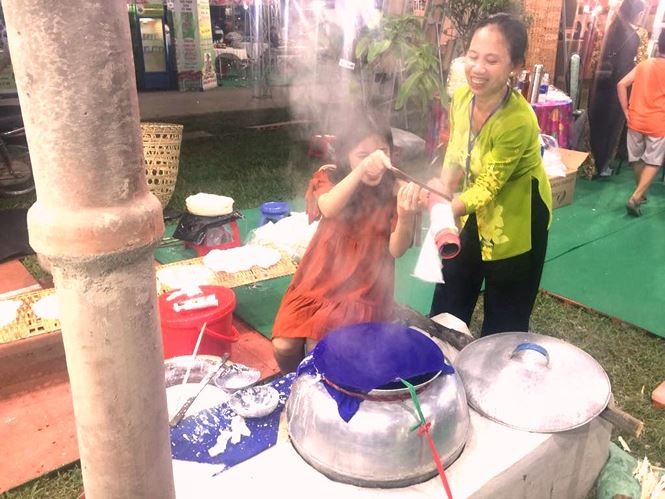 Life & Style
Life & Style

The second festival for rice paper, a traditional wrapper for spring roll, has just kicked off in Trảng Bàng District, southern province of Tây Ninh.
 |
| Hands on: Tourists can also take part in various stages of the production process. — Photo tienphong.vn |
TÂY NINH — The rice paper festival has just kicked off in Trảng Bàng District in the southern province of Tây Ninh.
Hosted by local authorities, the five-day event (December 20-25) aims to promote traditional food and handicrafts.
According to organisers, the event features 34 stalls offering bánh tráng (rice paper for wrapping spring rolls), and tourists will have the chance to experience the various stages of making rice paper, from grinding the rice to baking it and drying it at night.
Various local dishes are also on offer including vegetarian food, beef, shrimp and wild vegetables.
The event also features exhibitions of traditional handicraft products from nearby areas.
“There is also a winter background setting with snow and cherry blossoms,” said Nguyễn Hoàng Nam, deputy director of Tây Ninh Province’s Culture, Sports and Tourism Department.
The event, partly sponsored by Vương Hậu Company, is expected to receive up to 100,000 visitors.
Bánh tráng phơi sương (rice paper exposed to the fog) is a special ingredient for various types of spring rolls.
The traditional handicraft of making rice paper is not as common as it used to be. Today, families cannot complete the whole production process. Instead each family specialises in a stage; i.e.baking it, drying it or laying it out in the fog.
According to locals, exposing it to the fog is the most important stage and ensures the rice paper is soft and flexible. The stage requires experienced people who know how long to leave the rice paper out for.
Dating back to the 13th century, the round rice paper in Trảng Bàng has a slightly salty flavour, which comes from various stages. Rice is soaked for 4-6 hours before being ground in water. The solution is then purified to clear off hard substances. Some salt is added to keep it fresh in all kinds of weather. A big saucepan with water is brought to the boil, and cooks make the rice paper steamed on a cloth over the saucepan. When the rice paper is steamed, the paper is dried under the sun for two days. Then it is baked for a short time before being exposed to fog. The fog is absorbed by the paper to make it soft and flexible. The fog makes Trảng Bàng rice paper stand out from other localities across the country.
The handicraft has been recognised as a National Intangible Heritage. — VNS




